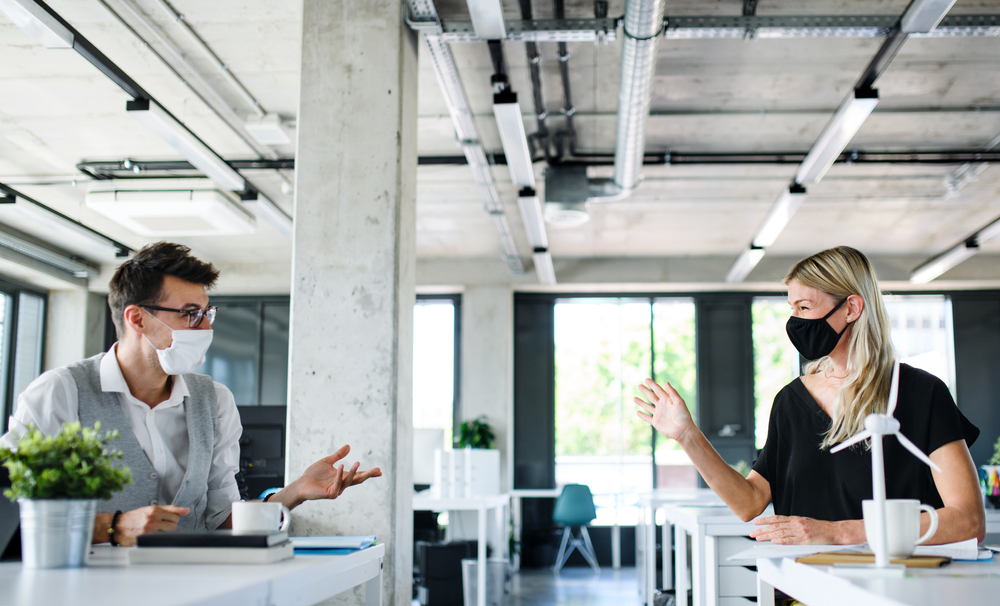To date, more than 211 million doses of the COVID-19 vaccine have been administered in the U.S. and this number continues to climb each day. This added and long-awaited protection against the SARS-CoV-2 virus is giving many people the confidence to return to their places of work, to dine out with friends and family and even to travel again.
As more businesses reopen or expand their capacity limits, it is important for facility managers to understand how to operate in a post-vaccine world. Consumer attitudes and concerns have greatly shifted over the last year, and with highly transmissible strains of COVID-19 still circulating around the world, facilities need to have the right cleaning precautions in place.
Best Practices for Busy Buildings
Consider the following strategies to give your facility’s visitors and occupants greater peace of mind as they start to frequent busier places.
Establish transparent cleaning routines that maximize productivity.
Before the pandemic, cleaning often happened out of sight of building occupants to avoid disruptions. Now, it’s important that visitors see cleaning taking place to enhance their peace of mind. Facility managers must set cleaning schedules carefully. Employees need time and space to complete their tasks, so avoiding the busiest parts of the day or night will be important. However, having staff on hand to clean floors, surfaces and restrooms while guests are present is key. As your facility returns to normal occupancies, note the typical flow of foot traffic to determine when and how many staff members to assign to cleaning.
Consider the environmental and health impacts of your cleaning chemicals.
With many organizations dedicated to cleaning more thoroughly and more often, it’s essential that facility managers understand what kind of impact their cleaning may have on indoor air quality, occupant wellbeing and their surrounding communities. Caustic chemicals that contain volatile organic compounds (VOCs), strong fragrances or even dyes can irritate cleaning professionals and building visitors. They can even seep into the ground and local water supplies if poured down drains or disposals.
Environmentally friendly chemicals can effectively inactive viruses, restore the look of surfaces and reduce indoor air pollution. Consider floor care machines that electrically convert water into an innovative cleaning solution, as well as electrochemically-activated solutions (ECAS) for cleaning and disinfecting counters, walls, restrooms, railings and more. Safe and sustainable solutions take the worry out of dealing with chemicals, which is especially helpful as foot traffic increases in your facility.
Bring automated solutions into the mix.
Robotics are increasingly becoming mainstream in the cleaning industry. This is because they allow cleaning teams to focus on other high-priority needs while automated machines resolve the tedious tasks. Floors are often the first thing facility visitors notice upon entering, so it’s crucial that they are always looking their best. Consider integrating automated vacuums or floor scrubbers into your program that will ensure floors are clean. They operate quickly and quietly and have sensors in place to avoid running into people, walls or other obstacles.
Regularly check the stock of restroom essentials.
With more people visiting facilities, restrooms will become busier. While they are often the smallest areas within a building, they can have the biggest impact on a visitor’s perception of cleanliness and impact their willingness to return. Make sure to frequently check the stock of necessities like hand soap, toilet paper and paper towels. If your facility has installed door tissue near restroom exits so guests can avoid directly touching door handles, be sure to restock these and regularly empty trash cans to avoid overflow.
A Rise in Occupancy and Consumer Confidence
As an increasing number of people receive the COVID-19 vaccination, the risk of disease transmission decreases. In turn, the public will feel more comfortable congregating in larger groups and facilities will increase occupancy thresholds. Allowing more occupants inside enables businesses to be more profitable. By keeping facilities clean, building occupants and guests will feel confident returning to the places where they work, learn, shop and socialize.
At GSF, we care about clean and understand the challenges facing facilities today. Contact us here to learn more about our offerings, and follow us on LinkedIn and Facebook for updates.
